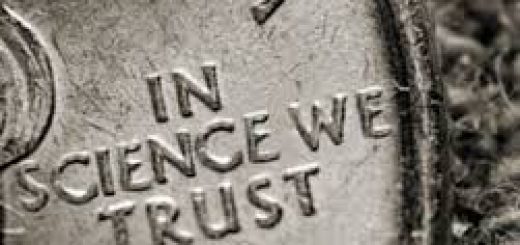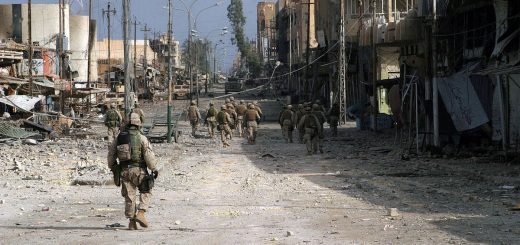Of Slums and Slobodka

[PHOTO; Ner Israel Rabbinical College]
When my father, a”h, underwent surgery several years ago at Johns Hopkins Hospital in downtown Baltimore, I spent several nights in a nearby apartment, courtesy of a wonderful chessed operation, the Jewish Caring Network’s Tikva House, several blocks from the hospital.
Johns Hopkins, I had been informed, provides escorts to accompany relatives of patients and visitors who need to walk at night to their nearby destinations. And so, a large man took me to the end of one block, where he turned me over to a clone of his who walked me the rest of the way.
I suspected that the escorts were gang members gone straight (at least I hoped they had), and were now gainfully employed by the hospital. But, whatever their backgrounds may have been, they were faithful bodyguards. And they owe their employment to the fact that downtown Baltimore is a less-than-entirely safe place.
President Trump’s heaping of scorn on Baltimore clearly came from his disdain for Representative Elijah Cummings, whose district includes much of the city and who is chairman of the House Oversight Committee.
The president called Mr. Cummings’ district a “rat and rodent infested mess.”
I dunno. I grew up in Baltimore City and only met my first rat in the president’s home town. But there is little doubt that Baltimore indeed has considerable problems.
The city’s crime rate is high, many residents are poor, many are jobless and many of them homeless. And, although the city’s Inner Harbor is a sparkling, attractive tourist attraction, vacant lots abound in parts of the city; and abandoned properties tend to invite the sort of things endemic to such neglected places, as per Yeshayahu 24: 12 – “through desolation, the gate is battered” (see Rashi, based on a Gemara).
And yet, in contrast to that depressing image, many of us, and for good reason, regard Baltimore as a veritable beacon of beauty and light.
The Chofetz Chaim is said to have remarked that the large, important cities on typical maps are misleading. Were maps to reflect what is truly important, he explained, a number of European towns (in his time) would rate as the true “world capitals,” places where Torah thrives: Telz, Mir, Kletsk, Slabodka, Gur, Volozhin, Bobov, Radun, Novardok…
In our day, New York is a large city on both maps. On the spiritual one, though, it is joined by a host of other, much less densely populated places across the country. Lakewood, New Jersey, for example, may be a relatively tiny township on the conventional map. But on the spiritual one…
Likewise, Greater Baltimore (“Bawlmer,” to us natives), whose Orthodox portion of the Jewish population rivals that of New York.
Baltimore’s Torah-observant Jewish community was established through the efforts of a small number of exceptionally dedicated individuals in the years before, during and after World War II.
The city benefited from the presence of Torah giants like the founding Rosh Yeshivah of Yeshivas Ner Yisroel, Rav Yaakov Yitzchok Ruderman, and the illustrious Rabbi Shimon Schwab, zecher tzaddikim livrachah; and of an assortment of dedicated Rabbanim, mechanchim and askanim.
Ner Yisrael has not only been a factor in Baltimore’s Torah growth, with scores of talmidim setting down roots locally, it has proven to be a virtual power plant of Torah, endowing communities across the country and around the world with Roshei Yeshivah and Roshei Kollel, mechanchim at all levels, talmidei chachomim and tomchei Torah, not to mention innumerable good, simple, ehrliche Yidden.
Add Baltimore’s relatively affordable housing, broad array of parnassah opportunities, its proximity to Washington, its wealth of shuls, mosdos chesed, mosdos chinuch and kollelim, and the yield is, as per the Chofetz Chaim’s perspective, a major metropolis.
When I visit my hometown these days, I marvel at how the frum community of my youth has burgeoned. Once upon a time, practically everyone in the Orthodox community knew all its other members, all shared the same “chicken man” (deliverer of fowl, that is, not costumed mascot), shopped at the same little grocery (now a multi-department food emporium) and sent their children to the same yeshivah (Chofetz Chaim, or “T.A” – Talmudical Academy) or (the only) Bais Yaakov. Today, though… well, things have changed.
On Shabbos, the sidewalks are filled with Jews on the way to or from shul or shiurim. There is a nationally respected beis din and shuls catering to a host of Jewish ethnic backgrounds. There are multiple options for parents seeking quality Torah educations for their children, and equally many options for furthering their own.
And, while there may not be a kosher restaurant and modest-clothing shop on every Park Heights or Greenspring block, there is no lack of kosher eateries or snood sellers in contemporary Baltimore.
So, while the president is entitled to his perspective, when I think of Baltimore today, what comes most readily to mind aren’t rats and slums but Radun and Slobodka.
© 2019 Hamodia




Recent Comments